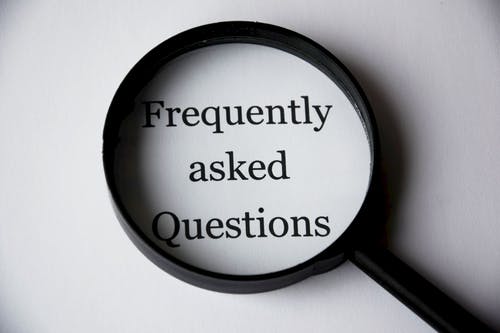What is Draw No Bet?
With a traditional Match Winner market, punters are given three options to bet on: home win, away win or draw. Draw No Bet markets remove one of those outcomes from the equation, to leave just the home win or the away win.
If the game you are betting on finishes as a draw, then, as the name of the market implies, there is effectively no bet. Your stake will be refunded and you will be no worse off than when you started.
Why not just bet on a straight win?
Wouldn’t it just be easier to back the team you fancy in the normal Match Winner market? Say, for example, that Chelsea are at home to Manchester United. If you think Chelsea have the edge, couldn’t you just back a home win. Well, yes you could, but Draw No Bet option has a number of advantages that can make it an attractive option.
For a start, it eliminates one of the trickiest aspects of football betting: working out the probability of the draw. Many football punters are pretty good at weighing up the relative abilities of two opposing teams, but calculating the draw odds is more complicated.
Markets that include the draw as an option also enable bookmakers to increase their margins. Generally speaking, the fewer options available in a betting market, the less opportunity for the bookmaker to make a profit, and the better the return to the punter.
Finally, for cautious punters, the Draw No Bet market also offers a degree of insurance. For example, in the game mentioned above, you might be confident that Chelsea have a tactical advantage against Manchester United, and you might be proven right.
But football is a relatively low scoring game and it frequently happens that the better team is unable to capitalise on their advantage. In those circumstances, the Draw No Bet punter can relax, because even if the poorer team manages to hang on for a draw, the bet will not be a loser.
Why are the odds lower for Draw No Bet?
Anyone who has looked at a Draw No Bet market will notice one very obvious fact. The odds for this market will be much lower than in the traditional Match Winner market. For example, in the game mentioned above, Chelsea might be 11/10 to win in the Match Winner market, but as short as 1/2 in the Draw No Bet market. This may seem strange at first glance, but it makes sense when you remember how odds and probabilities work.
In the above example, odds of 11/10 represent, roughly, a probability of 0.48 or 48 percent. When you add all the odds in any market together, the total will be slightly more than 100 percent (with the excess over 100 percent representing the bookmaker’s profit margin).
By removing the draw from the equation, a chunk of probability has been taken away, so this has to be added back in to the odds on the remaining two options, in order to ensure that the total probability in the market adds up to at least 100.
As a punter, it is up to you to weigh up whether it is worth taking the shorter odds that you find in a Draw No Bet market in order to gain an extra level of insurance.
What happens in Accumulators?
Many football punters like to combine their bets into accumulators, with the profit from each successful bet rolling onto the next one. It can be a good way to bring up a big win for a small stake, but if you’re thinking about combining Draw No Bet selections in an accumulator, you may be wondering what happens in the event of a draw. Does the accumulator fail?
Fortunately, no. For the purposes of accumulator bets, if there is a draw in a Draw No Bet selection, that bet is treated as void, just as if the game had been abandoned. The stake that would have been placed on that particular game simply rolls over to the next selection of the accumulator.
This will obviously reduce the potential final payout but it is a better outcome than the alternative of losing the whole accumulator because of one drawn game.
Draw No Bet strategies
Football punters who bet in the Draw No Bet market will develop their own methods, but there are some commonly used strategies that are worth considering.
The easiest way to get to grips with using Draw No Bet is to use it in those games where a dominant home side is taking on an inferior away team with a strong defensive record. These games can often be frustrating for punters who back the home team as their opponents set out their stall to defend for ninety minutes.
But by backing the stronger side in the Draw No Bet market, you can relax, knowing that if the visitors do hold on for a draw, you won’t lose any money, while their defensive attitude will all but rule out the chance of an away win.
Punters who do their homework on obscure teams and competitions may also find that their edge increases when backing Draw No Bet.
While building up your knowledge of the Turkish TFF Second League or the Belarusian Premier League will often be to your advantage as bookmakers don’t have the resources to have specialists analysing the smaller leagues, this advantage increases in Draw No Bet markets, which bookmakers tend to price up automatically, based on the Match Winner odds. By combining expertise in an obscure league with expertise in this specialist market, punters can gain a bigger edge.
Finally, one trick that can come in handy is to compare the Draw No Bet odds with the Asian Handicap 0:0 market, which effectively offers the same bet. Sometimes the available odds will be higher on one market than the other, though the bets amount to the same thing. By taking the higher odds, you will be increasing the chance that your bet represents value.
Conclusion
As we’ve seen above, the Draw No Bet market has a number of advantages. By removing the draw option, it makes it easier for punters to analyse a game and weigh up the probable outcome. It also offers a degree of insurance for those situations when the team you’ve backed is denied a win through bad luck or dogged defending, and unlike a traditional Match Winner bet, a Draw No Bet selection won’t ruin your accumulator if the game ends in a draw.



